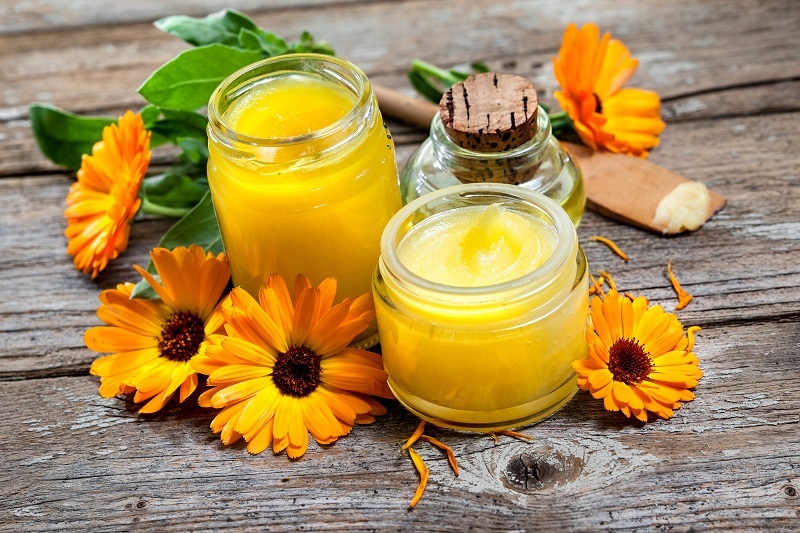8 mind-blowing facts about sunflowers that will surprise even experts
Posted on 23/08/2025
8 Mind-Blowing Facts About Sunflowers That Will Surprise Even Experts
Sunflowers (Helianthus annuus) are often associated with cheerful fields, golden petals, and the blissful days of summer. But did you know that these seemingly simple plants hold secrets that can astonish even seasoned botanists? Whether you're a hobby gardener or a plant scientist, you'll be amazed by these mind-blowing facts about sunflowers. Dive in and discover fascinating information that changes the way you look at sunflowers forever!
1. Sunflowers Can Clean Up Toxic Soil
Few people realize that sunflowers are not just beautiful--they're environmental heroes! Sunflowers are known as phytoremediators, meaning they absorb harmful toxins from soil through a process called phytoremediation.
- After the Chernobyl disaster, sunflowers were planted to extract radioactive elements such as cesium and strontium from contaminated soils.
- Sunflowers have also been used to clean up lead, arsenic, and other toxic metals from polluted lands worldwide.
- They absorb toxins through their roots, making the soil safer for future plants and even communities.
This scientific marvel proves that sunflowers are not just decorative--they're powerful tools for environmental restoration.
Why does this work?
The unique physiology of sunflower roots allows them to uptake heavy metals and radioactive isotopes, concentrate them in their tissues, and thereby remove them from the environment. This process offers promise for future eco-friendly solutions to pollution.

2. Sunflowers Exhibit Mathematical Genius
Nature is full of patterns, and sunflowers are a beautiful demonstration of math in action!
- Sunflower heads display spiral patterns that follow the famous Fibonacci sequence.
- The spiral arrangement maximizes the number of seeds the flowerhead can hold, ensuring strong reproduction.
- Mathematicians and botanists alike marvel at how these striking patterns reflect the fundamental rules of nature.
Next time you look at a sunflower, count the spirals--they often match Fibonacci numbers like 34, 55, or 89!
The science behind the spiral
The angle between sunflower seeds, approximately 137.5 degrees, is called the "golden angle." This perfect spacing prevents seeds from crowding and ensures the flowerhead packs seeds as tightly as possible--an ingenious natural design.
3. Sunflowers Track the Sun--But Only Sometimes!
It's true: young sunflowers exhibit a cool behavior called heliotropism, or sun-tracking.
- Juvenile sunflowers follow the sun's movement from east to west during the day, maximizing photosynthesis.
- At night, the flower heads turn back east, ready to greet the sunrise.
However, here's what even many experts don't know: mature sunflowers stop moving and usually face east permanently!
Why do they stop?
Once the flower matures, the stem stiffens and the plant gears its energy towards seed production. Facing east gives them an early-morning warmth, which boosts pollinator visits and seed development.
4. Sunflowers Are a Natural Food and Oil Powerhouse
Sunflowers are a staple crop worldwide--but their versatility is mindboggling!
- Sunflower seeds are packed with protein, vitamin E, healthy fats, and minerals.
- Sunflower oil is one of the most popular vegetable oils for cooking and salad dressings, known for its light flavor and high smoke point.
- Bird-lovers prize sunflower seeds as the top choice for backyard bird feeders.
Some cultures even roast the seeds or press them into nutritious bars!
Beyond food--sunflower oil in other industries
Sunflower oil is also used in skincare, cosmetics, and as a carrier oil in aromatherapy. Its low allergenic properties make it a top choice for gentle skin creams and soaps.
5. Sunflowers Can Grow to Towering Heights
If you think your backyard sunflower is impressive, wait until you meet the record-holders!
- The current Guinness World Record for the tallest sunflower is an astonishing 9.17 meters (30 feet 1 inch), grown by Hans-Peter Schiffer in Germany.
- Some sunflower varieties are bred specifically for height, while others produce enormous flowerheads over two feet wide!
These gigantic sunflowers often require support stakes and careful cultivation, but watching them grow skyward is a true spectacle.
How do sunflowers get so tall?
Sunflowers have thick, fast-growing stalks fueled by genetic vigor and sunlight, capable of reaching heights unmatched by most annual flowers. The secret lies in the plant's robust vascular system, which rapidly transports water and nutrients during the growing season.
6. There Are Over 70 Species of Sunflower
Sometimes we think of the common garden sunflower, but the sunflower family is incredibly diverse.
- Botanists recognize over 70 species in the Helianthus genus, with most being native to North America.
- Some species are wild and perennial, while others are annuals like the classic large-flowered Helianthus annuus.
- There are dwarf varieties, multi-headed types, and even sunflowers in unusual colors like red, orange, and deep chocolate brown.
This diversity makes sunflowers valuable for breeding, wildlife, and landscaping.
The wild side of sunflowers
Wild sunflowers provide important habitat and food sources for pollinators and native wildlife. Researchers study wild sunflower DNA to improve pest resistance and drought tolerance in cultivated varieties.
7. Sunflowers Have Deep Cultural and Symbolic Meaning
For centuries, people around the world have celebrated the sunflower's beauty and power.
- Native American tribes revered sunflowers as symbols of harvest, health, and joy, using every part of the plant for food, oil, dye, or medicine.
- In art, sunflowers inspired masterpieces by Vincent van Gogh and other painters, representing happiness and hope.
- Today, sunflowers are national symbols in countries like Ukraine, where they signify peace, unity, and resistance.
Sunflowers even represent adoration and loyalty in the language of flowers.
Cultural celebrations
From festivals to folk art, sunflowers appear in rituals and traditions worldwide. Growing or gifting sunflowers is often seen as a gesture of encouragement and positivity.
8. Sunflowers are Helping Scientists Tackle Climate Change
Cutting-edge research is revealing sunflowers as key players in the future of farming and climate resilience.
- Sunflowers are naturally drought-tolerant, making them ideal for cultivation in areas affected by climate change.
- Their deep roots help stabilize soil and retain moisture, which can prevent erosion and improve agricultural sustainability.
- Sunflower varieties are being bred to further increase their resilience in changing weather patterns.
Some studies show that sunflower crops can even help sequester carbon and reduce agricultural emissions.
The sunflower's promise for future agriculture
Scientists are exploring how sunflowers' adaptability and hardiness can lead to breakthroughs in drought-resistant crops and sustainable food production, addressing both food security and environmental concerns.
Why Sunflowers Deserve Our Attention
From astonishing environmental benefits to mathematical beauty and profound symbolism, sunflowers are far more than meets the eye. Knowing these amazing sunflower facts will change the way you see these golden blooms, elevating them from garden staples to scientific and cultural marvels.
Whether in ecological restoration, advanced research, or simply brightening your home, sunflowers truly shine in every sense.
Did these facts surprise you?
The next time you pass a field of sunflowers, remember: every bloom carries a world of stories, secrets, and science waiting to be discovered.

Frequently Asked Questions About Sunflowers
- Can all sunflowers clean up toxic soil?
Not all species are effective for phytoremediation, but Helianthus annuus and a few other species are widely used in environmental projects. - Are sunflower seeds healthy to eat?
Yes! Sunflower seeds are a rich source of healthy fats, vitamins, minerals, and protein. - How tall do sunflowers usually grow?
Common varieties reach 6-10 feet, but special cultivars can grow much taller, even breaking world records! - Do sunflowers only come in yellow?
No--sunflowers come in red, orange, bronze, and even deep chocolate hues, thanks to genetic diversity and selective breeding. - What is the best way to grow sunflowers?
Plant seeds in direct sunlight after the last frost, water regularly, and support taller varieties as they grow.
Conclusion
Sunflowers are true wonders of the plant world. Their abilities--from healing the earth to demonstrating the magic of mathematics--set them apart from ordinary flowers. Now that you know these 8 mind-blowing sunflower facts, you can share them with friends, family, or even impress seasoned botanists. Next time you see a sunflower, you'll know just how special these remarkable plants really are!
Latest Posts
Identify the Flower That Celebrates Your Identity
Employ proven techniques for stunning long-lasting blooms
8 mind-blowing facts about sunflowers that will surprise even experts





